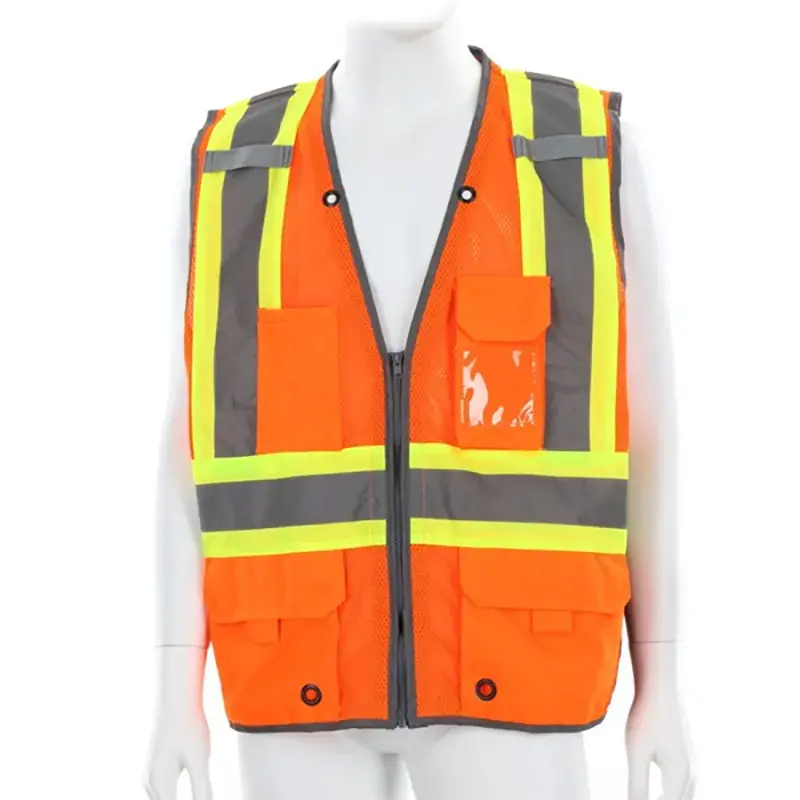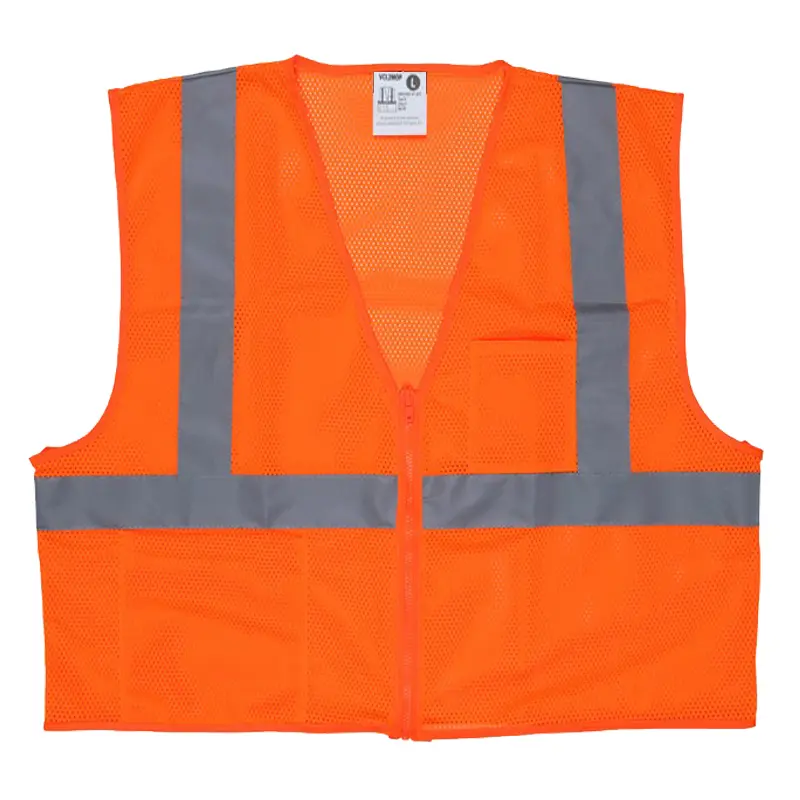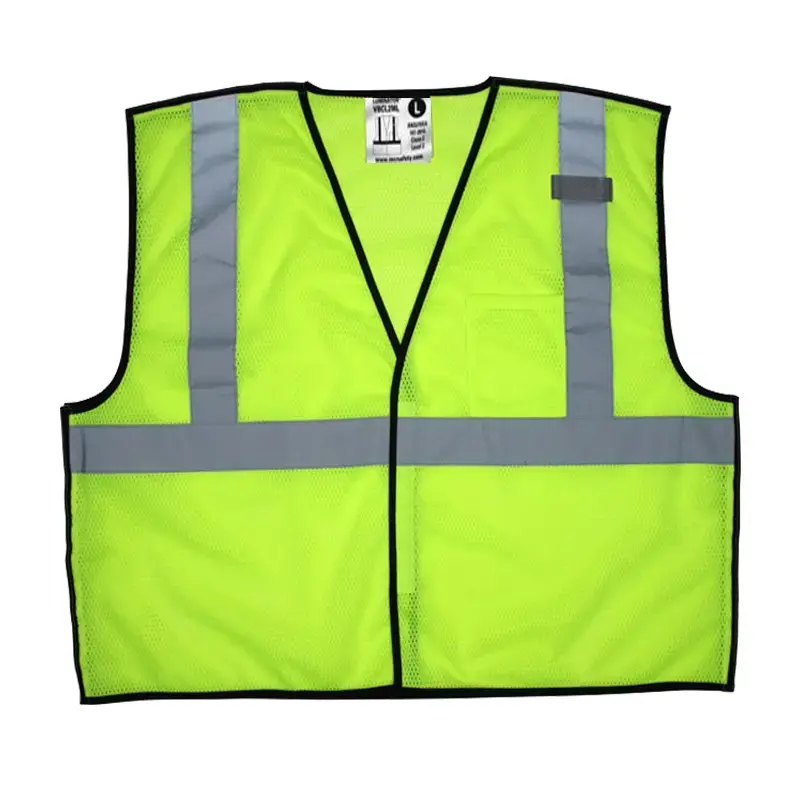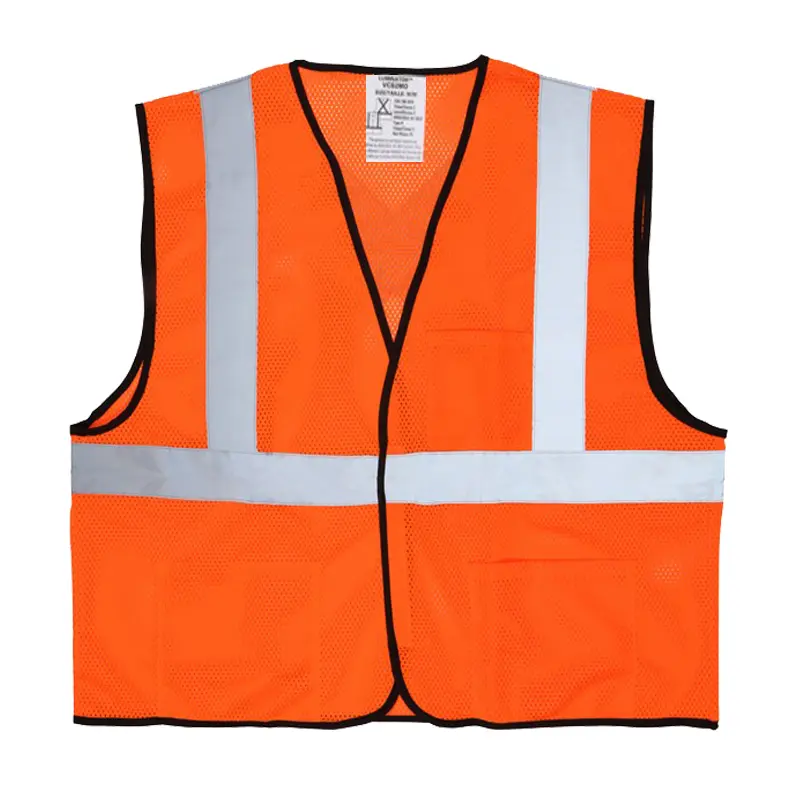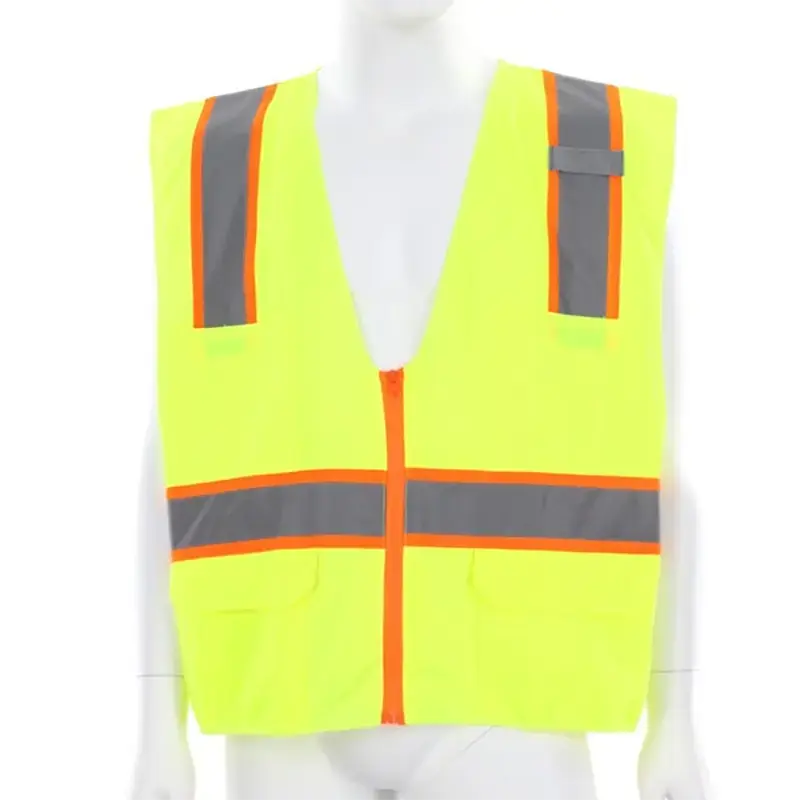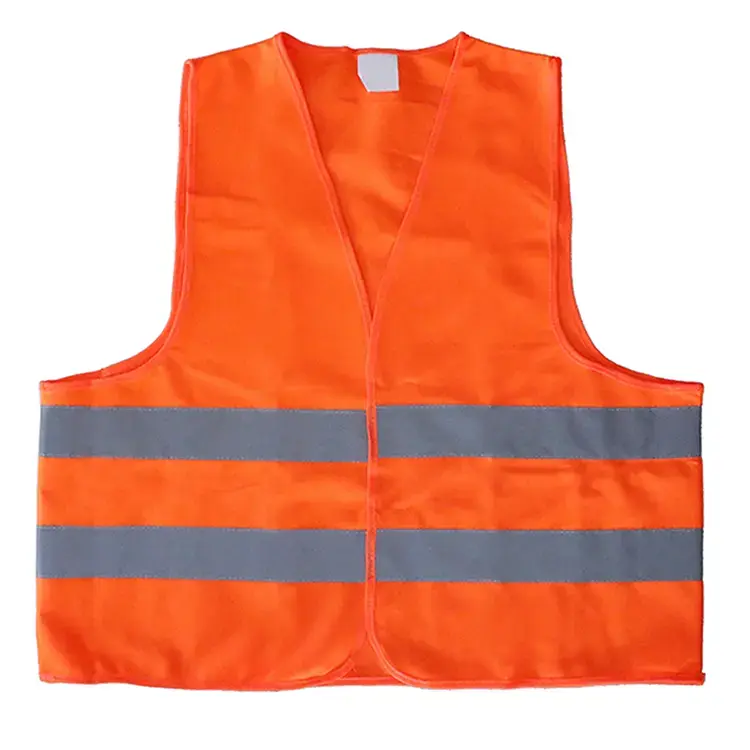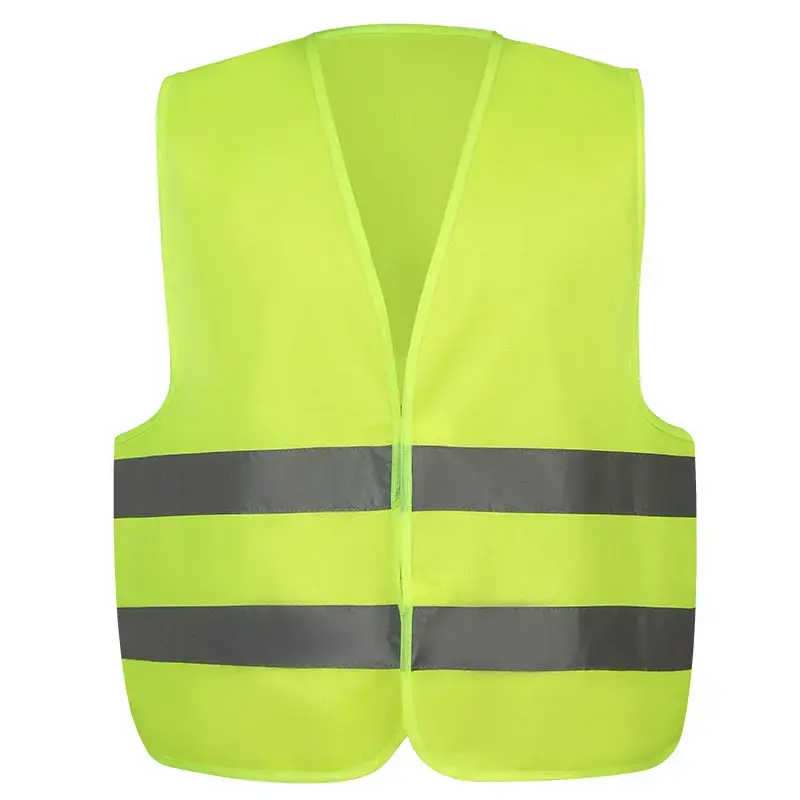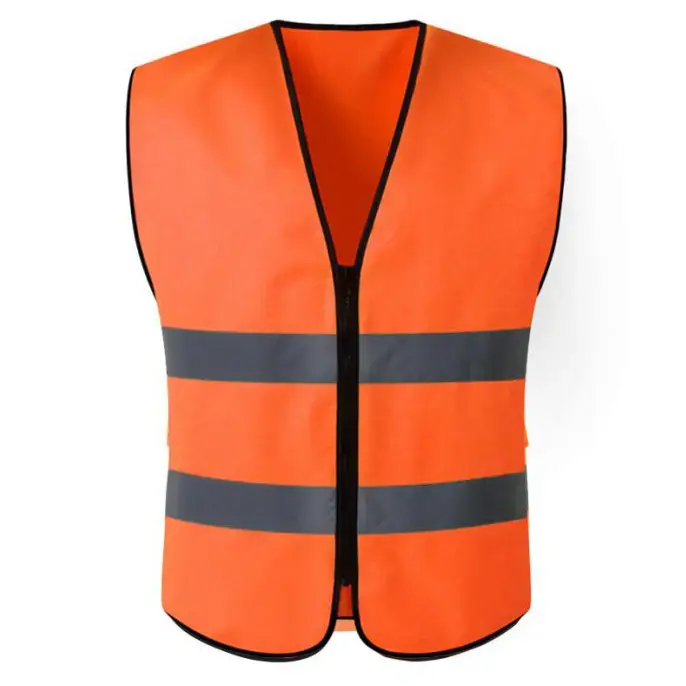Full analysis of reflective clothing testing requirements
Full analysis of reflective clothing testing requirements
In the international market, reflective clothing is an important personal protective equipment, and its quality testing requirements are strict and comprehensive. For merchants engaged in international wholesale procurement of reflective clothing, it is crucial to have a deep understanding of these testing requirements.
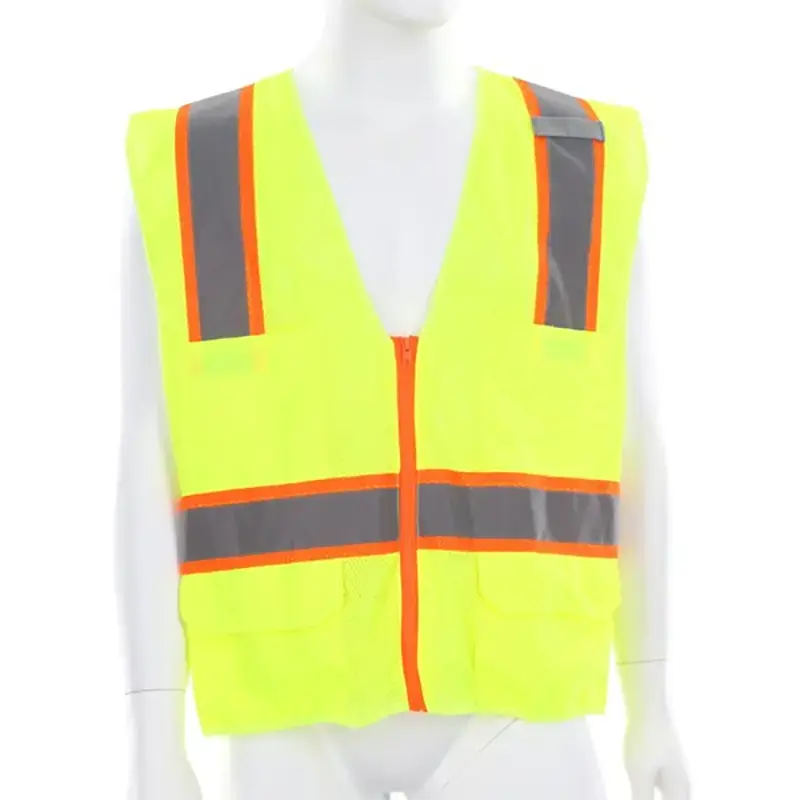
I. Overview of international mainstream standards
(I) EN ISO 20471:2013 standard
EN ISO 20471:2013 is a high-visibility reflective clothing standard formulated by the European Organization for Standardization. It is suitable for high-risk environments such as traffic management, road construction, emergency rescue, etc. The standard specifies the reflective strip area, design specifications, performance testing and other requirements of reflective clothing. For example, the total area of reflective strips of Class 1 reflective clothing must be ≥0.1 square meters, the fluorescent fabric must be ≥0.14 square meters, and at least one reflective strip must surround the body 360 degrees, and the disconnected part must be ≤50mm. The performance test includes 8 indicators such as original reflectivity, reflectivity after wear, and reflectivity after washing.
(II) EN 17353:2020 standard
EN 17353:2020 is applicable to low-energy reflective clothing, mainly for daily commuting and low-risk outdoor activities. The standard divides reflective clothing into three types: TYPE-A (daily use), TYPE-B (night use) and TYPE-AB (day and night type), and has clear requirements for the area of fluorescent fabrics and reflective strips. For example, the TYPE-B3 level requires the total area of the reflective part to be at least 0.06 square meters.
(III) GB 20653-2020 standard
GB 20653-2020 is a Chinese national standard applicable to high-visibility warning clothing for occupational use. The standard refers to the international standard ISO 20471:2013 and makes detailed provisions on the material properties, design requirements and test methods of reflective clothing. For example, the retroreflective coefficient of reflective materials at a distance of 20 meters and an incident angle of 30 degrees shall not be less than 330cd/lx/m².
II. Detailed explanation of test items
(I) Reflective performance test
Retroreflective coefficient test: This is a key indicator for evaluating the reflective effect of reflective clothing at night or in low light conditions. Use a professional retroreflective coefficient tester to measure at the specified angle and distance. For example, the EN ISO 20471 standard requires that the retroreflective coefficient of Class 1 reflective clothing should not be less than 200cd/lx/m².
Retroreflective performance after temperature change: Simulate different temperature environments to test the retroreflective performance of reflective clothing after temperature changes. Because reflective clothing may face cold winters or hot summers, temperature changes may affect the performance of reflective materials.
Reflectivity in washing, dry cleaning, and rain: By simulating the cleaning and bad weather conditions in daily use, the reflective performance of reflective clothing in these conditions is tested. For example, the GB/T 38046-2019 standard requires that the retroreflective coefficient of the retroreflective material of the reflective clothing in a wet state at an incident angle of 5° and an observation angle of 12' should be greater than or equal to 200cd/(lx·m²).
(ii) Color fastness test
Color fastness to washing and dry cleaning: simulate the friction and washing conditions in daily wear and washing process, and test whether the color of the background material and reflective strips is easy to fall off or fade. For example, the EN ISO 105-C06:1997 standard specifies the test method for color fastness to household and commercial washing.
Color fastness to perspiration: test the color stability of reflective clothing under the action of human sweat. The new version of the EN ISO 20471:2013 standard changes the dyeing requirements for color fastness to perspiration from level 3 to the lower level 4.
Color fastness to light: evaluate the color stability of reflective clothing under long-term lighting conditions through the xenon test. For example, the GB/T 8427-2008 standard specifies the test method for color fastness to artificial light.
(iii) Physical performance test
Tensile strength and bursting strength: test the fabric strength of reflective clothing. For example, the EN ISO 20471:2013 standard requires that the tensile strength of woven materials must reach 100 Newtons, and the burst strength of knitted materials must reach 100 kPa (50 square centimeters test area).
Abrasion resistance test: Use equipment such as the Martindale abrasion tester to simulate the friction conditions in actual use and test the wear resistance of reflective clothing. For example, the GB 20653-2020 standard requires that the number of wear resistance of reflective clothing be increased from 5000 times to 8000 times.
Tear strength: The longitudinal tear force of the base fabric must be ≥32N and the transverse tear force must be ≥28N. The trapezoidal method is used for sampling during the test, and the stretching speed is controlled at 100mm/min.
(IV) Design and size requirements
Reflective strips and fluorescent fabric area: Different standards have clear requirements for the minimum area of reflective strips and fluorescent fabrics. For example, the EN ISO 20471:2013 standard requires that the total area of reflective strips on Class 1 reflective clothing must be ≥0.1 square meters, and the fluorescent fabric must be ≥0.14 square meters.
360-degree visibility design: Reflective clothing must be designed with at least one reflective strip that surrounds the body 360 degrees to ensure that the wearer can be clearly seen from all angles.
Size adaptation requirements: The chest circumference error of adult reflective clothing must not exceed ±2cm, and the length error must be ±1.5cm. For people with special body shapes, the national standard has added test specifications for sizes above XXL.
(V) Other requirements
Markings and instructions: Necessary markings and instructions should be marked on reflective clothing, such as the standard number it meets, the purpose of the reflective clothing, and precautions for use. For example, all reflective clothing must be printed with the QS safety certification code and the reflective material grade mark, such as "GB-2025-CL3" indicates a third-level material that meets the national standard.
Environmental protection and comfort: The new version of the standard has higher requirements for the limit of harmful substances, such as lead ≤50mg/kg and cadmium ≤20mg/kg in the extractable heavy metal content. At the same time, the air permeability must be ≥120mm/s, and the temperature rise on the side of the garment must not exceed 4°C within 8 hours of continuous wearing.
III. Testing process and certification
(I) CE certification process
Submission of application: The manufacturer submits a CE certification application to a qualified certification body and provides relevant product information, such as product design drawings, instruction manuals, etc.
Product testing: Various performance tests are carried out in accordance with EN ISO 20471 standards, including reflective performance, color fastness, abrasion resistance, etc.
Technical review: The certification body reviews the technical documents of the product to ensure that the design and production of the product meet the standard requirements.
Certification decision: Based on the product test results and technical review, the certification body makes a certification decision. If the product is qualified, a CE certification certificate is issued.
Affixing the CE mark: After obtaining the CE certification certificate, the manufacturer can correctly affix the CE mark to the reflective clothing product and its packaging.
(II) Other certifications
In addition to CE certification, reflective clothing may also need to meet other certification requirements in different countries and regions. For example, in the United States, reflective clothing must comply with ANSI/ISEA 107 standards.
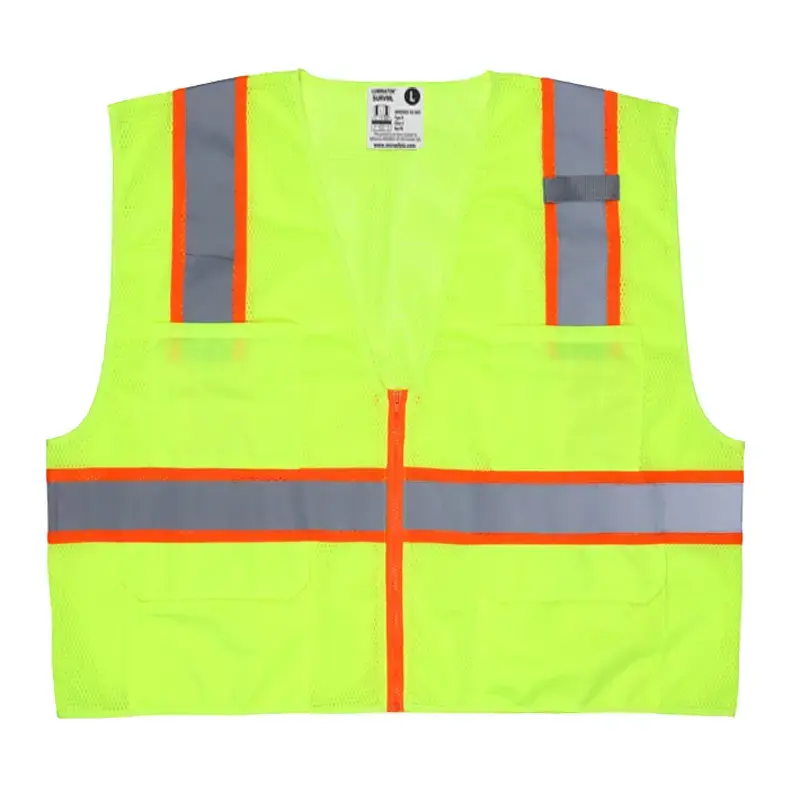
IV. Testing agencies and costs
(I) Testing agencies
It is crucial to choose a qualified testing agency. For example, Beijing Zhongke Optical Analysis Science and Technology Research Institute has CMA, CNAS, ISO and other qualifications, and can conduct testing in strict accordance with the standards. In addition, institutions such as GIG Huabiao Testing also provide professional reflective clothing testing services.
(II) Testing costs
The testing costs of reflective clothing are usually quoted based on the test items and the complexity of the experiment. Generally, the testing cycle is 7-15 working days.


